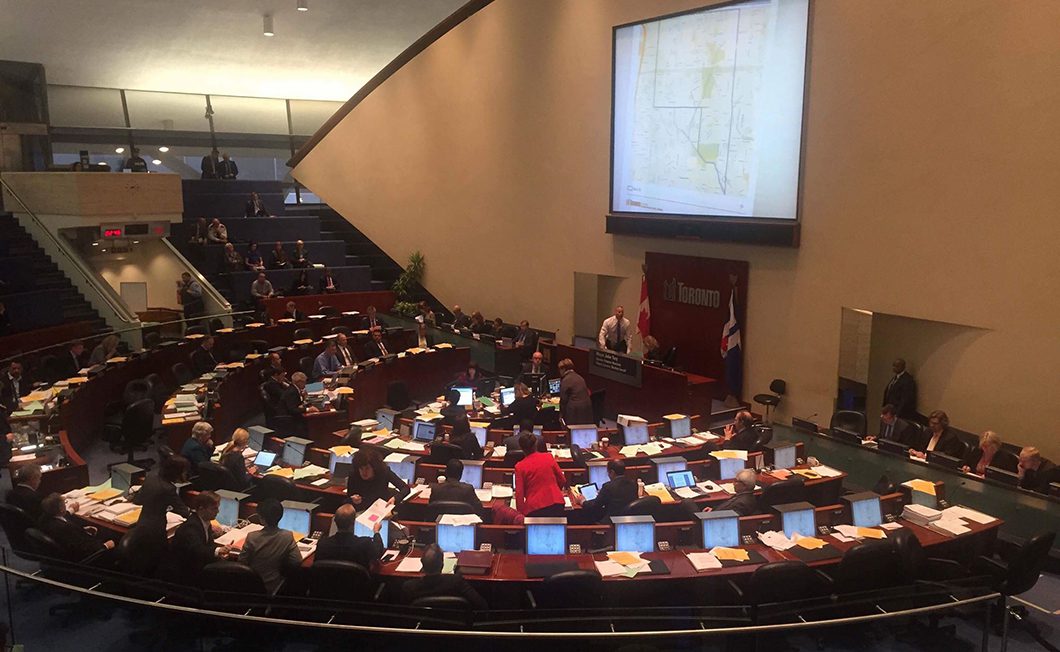Diane Dyson’s first run for city councillor hasn’t been what she expected. She doesn’t know her ward, her competition or her budget, but she does know one thing about this election: “It’s making voters’ heads spin.”
“When they can’t figure out what ward they’re in and who’s running, there’s no chance for us to talk about issues,” says Dyson, a nominee in what is, for now, Ward 35.
At least, says Brad Bradford, a first-time Ward 37 nominee, the greeting at the door is more receptive.
“When I was knocking on doors in June and July, nobody knew there was an election,” he says. “Now I get to the door and we’ll make the joke, ‘Are you still a candidate, is this still an election, are you still running?'”
But local councillors agree the joke is no laughing matter. This municipal election was already different, adding two wards to the previous 45. Premier Doug Ford’s move to reduce the size of city council to match the 25 provincial and federal ridings mid-election, led to a court battle against the city of Toronto — and use of the notorious notwithstanding clause in Bill 31.
Ontario is still debating Bill 31 after a special House session on Sunday, Sept. 16 led to a rare midnight meeting the next day. After a successful first reading of the bill on Sept. 13, however, protest echoed in the legislature.
It’s a ping-pong election.
—City councillor Paula Fletcher
“A lot of people were in the public galleries objecting, and instead of removing them, everyone was thrown out,” says Peter Tabuns, Toronto-Danforth MPP. “There were grandmothers taken away in handcuffs. I’ve never seen it before.”
While the ping-pong election between the city and the premier proceeds, Tabuns says the only outcome has been a chaotic campaign.
“I’ve talked to candidates in other ridings and this riding and we’re all saying, ‘What on earth is going on?’ Incumbents will be campaigning against each other; people who have worked together for a long time.”
Ward 30 councillor Paula Fletcher knows the feeling. After spending two election campaigns working alongside councillor Mary Fragedakis, who is running in Ward 34, their cooperation may become competition. But for now, they wait.
“City councillor Fragedakis and I have worked in the 47-ward model. We’re not running a 25-ward campaign now,” she says. “It’s very hard for us to think about running against each other. If we do, we’ll campaign not against each other, but for what we each believe in.”
East Yorkers sense the tension, but it’s an all-too-familiar feeling.
“I’ve always believed sometimes smaller isn’t always better,” says Justin Van Dette, an East York community organizer. “When East York was its own municipality, you had eight councillors for 100,000 people.”
Though Van Dette says he supports a smaller city council, he admits the community’s defiance reminds him of an older change to the city — Mike Harris’s amalgamation of Toronto.
The old East York had virtue with councillors being much closer to them.
—Peter Tabuns, Toronto-Danforth MPP
Amalgamation was an unpopular move amongst East Yorkers. Tabuns says it was the beginning of a different community.
“The old East York had virtue with councillors being much closer to them,” he says. “Harris undermined that and Ford will take the next step.”
However, Van Dette thinks Toronto needs to take a step “back to basics.”
“I’m worried the unnecessary debate about provincial policy is overshadowing the real issues,” he says. “Housing, transportation, making sure the grass in the parks is getting cut and the roads are being maintained.”
With uncertainty looming over the election set for Oct. 22, Fletcher hopes East York will have faith in their leaders.
“People are worried with 25 wards, some will be left out,” she says. “It’s up to us to prove no one will.”

